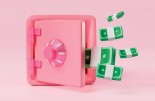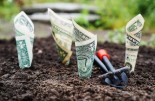Han Dieperink: The junk rally of 2025
Han Dieperink: The junk rally of 2025

This column was originally written in Dutch. This is an English translation.
By Han Dieperink, written in a personal capacity
Something strange is happening on the stock market. Companies that have been making losses for years are rising much faster than companies that are simply making profits. Since April 2025, the worst-performing shares have risen by as much as 40% more than the best-performing ones. That is exactly the opposite of what we normally learn about investing.
A junk rally is a period in which the weakest companies perform best. These companies have not been profitable for years, have enormous debts, and are often on the verge of bankruptcy. Normally, sensible investors stay well away from them. But in a junk rally, the opposite happens: it is precisely these unstable companies that rise most sharply in value. This phenomenon is not new, but it is now extremely prominent. In the Russell 2000, an index of smaller American companies, loss-making companies outperformed profitable companies by 40%.
It all started in April 2025. President Trump announced high import tariffs. Many companies would face major problems as a result. Investors became fearful and sold their shares in a panic, especially those of weak companies. Share prices fell sharply.
In July, something unexpected happened. Trump almost completely reversed his plans. The fear disappeared in one fell swoop and the market felt a great sense of relief. When you are very afraid of something and that fear suddenly disappears, you often feel extra happy. The shares that had fallen the most now rose the most. Companies that were going to go bankrupt tomorrow are suddenly no longer going bankrupt, causing these shares to rise sharply.
At the same time, central banks lowered interest rates. This was fantastic news for weak companies. They have to borrow money constantly to stay afloat. Lower interest rates mean lower costs. A company that used to pay ten million euros in interest per year may now only pay five million. On paper, their situation suddenly looks much better, even though they still don't earn a penny from their products or services.
Many large investment funds had bet on good companies and at the same time bet that bad companies would fall. For years, that strategy worked perfectly. But now it went completely wrong. The bad shares rose instead of falling. The funds lost twice: their good shares hardly rose at all and their bet against the bad shares cost them a huge amount of money. To prevent even more losses, they had to stop those bets quickly. To do so, they had to buy the bad shares, which caused them to rise even more sharply. One fund after another got into trouble. It became a snowball effect.
While professional investors lost a lot of money, ordinary people using investment apps actually made a profit. They hardly ever look at annual figures or real value. They follow tips on TikTok, Reddit or X and mainly trade on their gut feeling.
In South Korea, a number of chicken restaurant shares rose 30% because the boss of chip company Nvidia happened to have eaten chicken there. It had nothing to do with the restaurants themselves. It was pure hype. Artificial intelligence, or AI for short, is the hot topic of 2025.
Everyone wants to be part of it. The big tech companies have already become very expensive, so investors are looking for smaller companies that do something with AI. A small chip company, a pharmaceutical company, or even a pizza chain that says it uses AI for delivery: everything is rising. It doesn't matter if they actually make money with AI. The story is more important than reality.
We have seen this before. In 1999, internet companies with no revenue suddenly became worth millions. In 2021, meme stocks such as GameStop rose thousands of per cent thanks to groups on Reddit. In both cases, a major crash followed. The pattern is always the same: first a good story, then exaggeration, then prices lose all touch with reality, and finally the harsh correction comes.
Research over the past twenty-five years clearly shows that bad companies rose by an average of 300% during these periods. However, good companies with real profits rose by 500% to 900%. In the long run, quality always wins.
Last week, there were clear signs that this rally is almost over. Business leaders are negative about the economy, while their share prices are still high. Bitcoin and gold are not performing as well. These are often the first warning signs. So take those profits now. No one has ever become poor by taking profits. Do you still want to get in now? Stick with good, boring companies with real profits, stable cash reserves and low debt.
This junk rally will end like all the others: with big losses for those who are too late. It's not a question of if it will happen, but when. What has risen so sharply for no real reason will also fall sharply. In the end, gravity always wins. Quality is rewarded, junk is punished and greed always pays the price. The lesson remains the same: there is no free money on the stock market and, in the long run, those who do their homework well will win.









